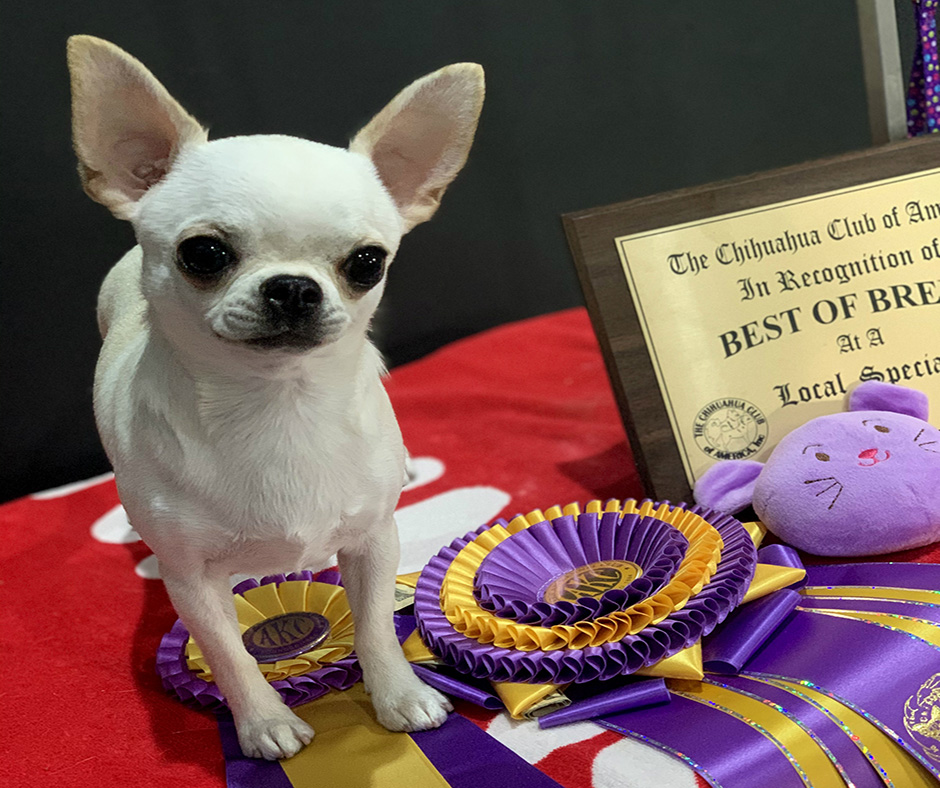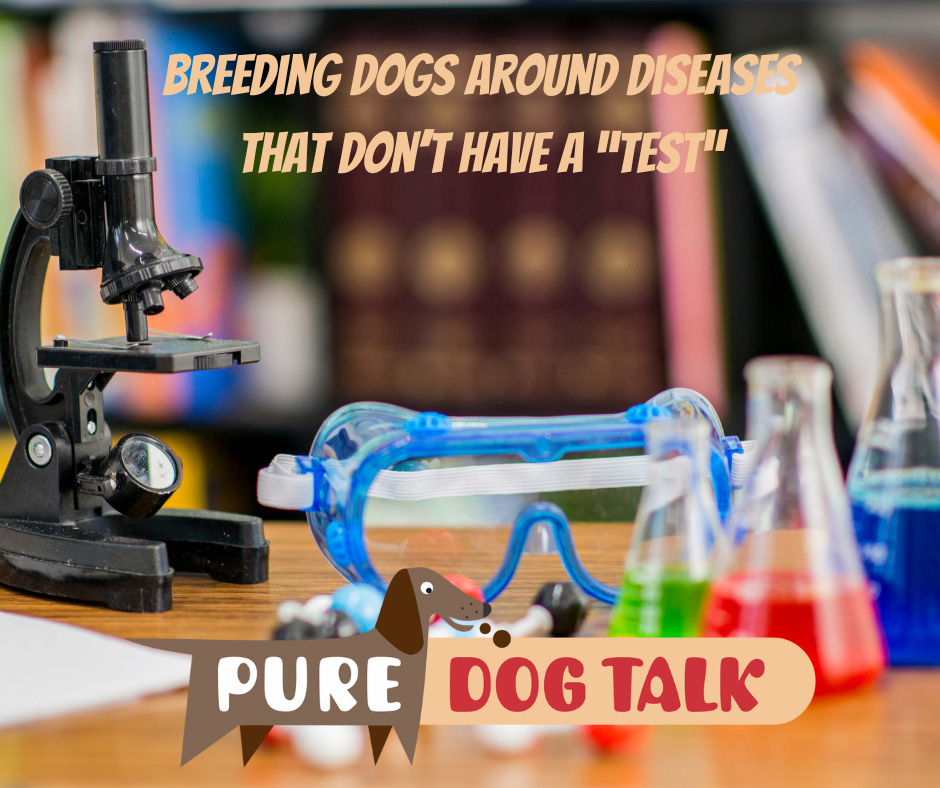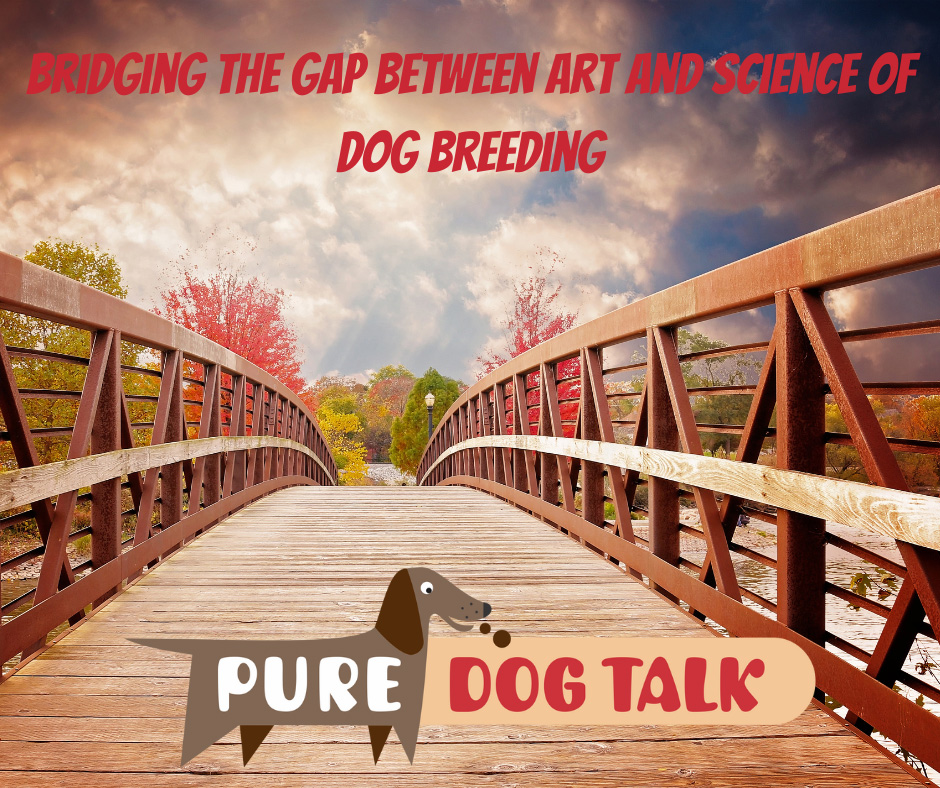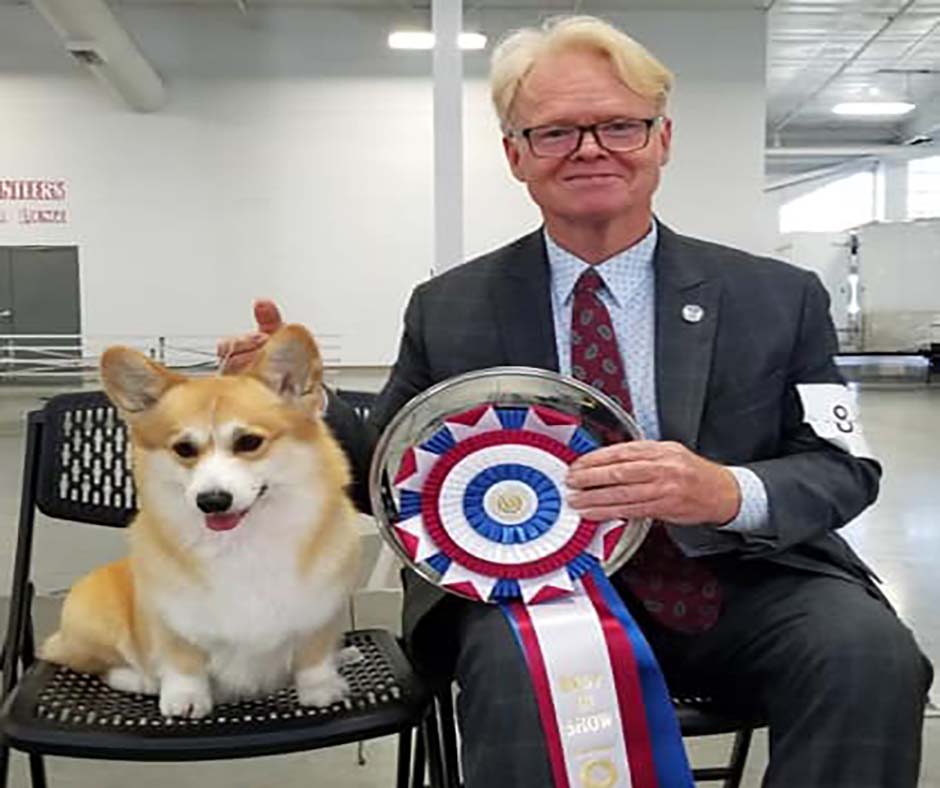701 – PennHIP for the Win on Reducing Incidence of Hip Dysplasia
PennHIP for the Win on Reducing Incidence of Hip Dysplasia
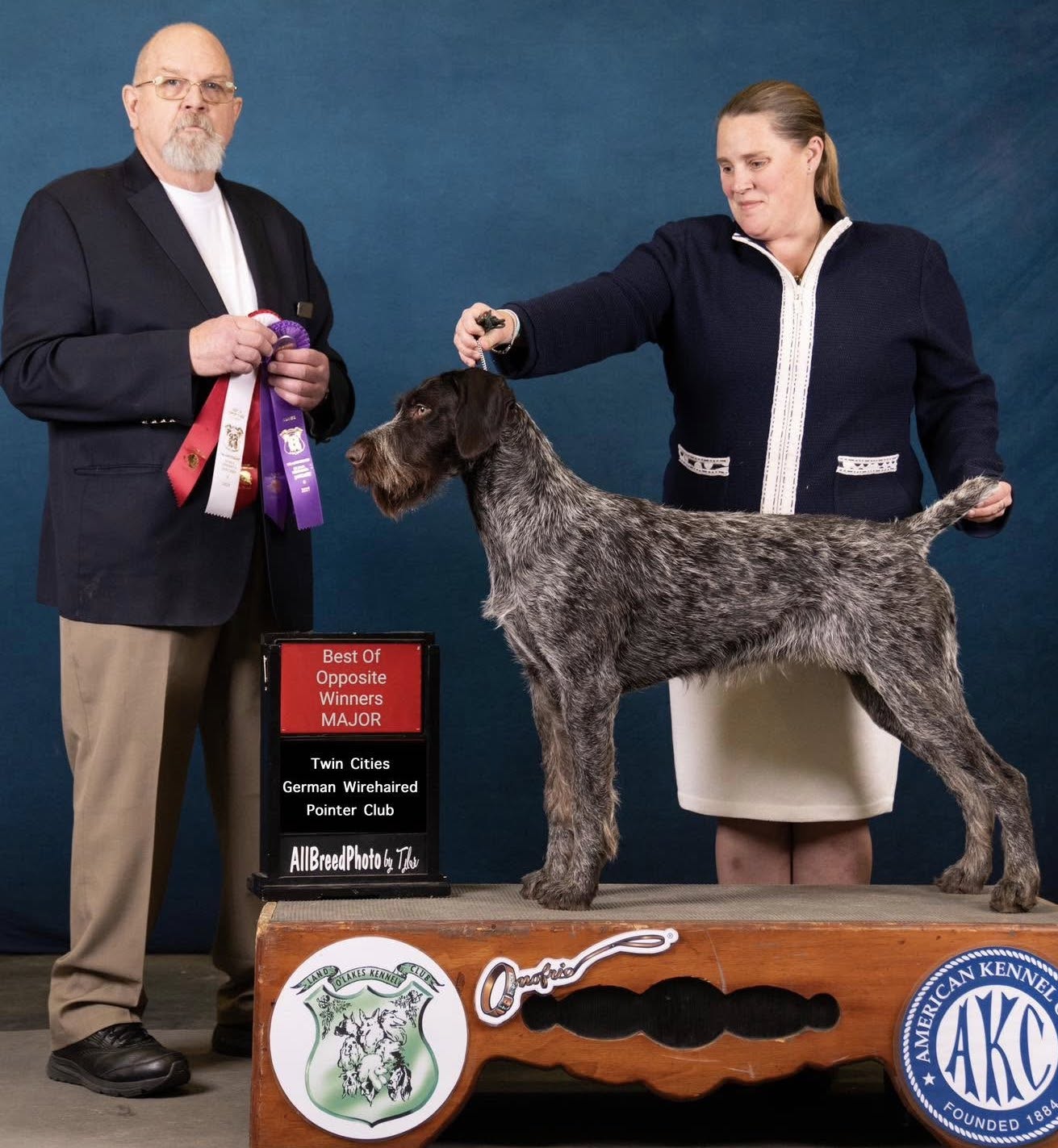
Dr. Karen Potter showing one of her German Wirehaired Pointers.
Host Laura Reeves is joined by Dr. Karen Potter to discuss the value of PennHIP evaluations to reduce the incidence of hip dysplasia in a breeding program.
“While yes, I do PennHIP my dogs,” Potter said, “I typically will go back and still get an OFA score on them. So I have both avenues to look at as I’m going through my breeding. With Penn Hip, we’re able to have a number that I can use in order to then go forward with breeding and that gives me an idea of if I have a dog with a higher laxity score to then breed that to a dog with a lower laxity score to try to continue to bring the number down in the offspring trying to improve the quality.
“What the PennHIP program has done is they determined the laxity score, which is how much the hip joint is able to luxate during movement. We all know the hip is a ball and socket joint and the laxity being how much the ball can come out of the socket. And so when that ball comes out of the socket, in each step, they found that those forces and each concussive force is what we then develop osteoarthritis from.
“When we’re looking at a PennHIP score, we’re looking for a score that is smaller, lower numbers are better. So it’s a distraction value saying this is how much we can passively distract the hip from the socket. And I say passively because we’re doing this while the dogs are under heavy sedation or anesthesia.”
Listen in to take a deep dive into the world of PennHIP scores, how the test works, what it tells breeders and how to use the scores in a breeding program.
For additional information on the studies done on the efficacy of this testing method check out this LINK.
695 – The Tiny but Mighty Chihuahua with Kristi Green
The Tiny but Mighty Chihuahua with Kristi Green
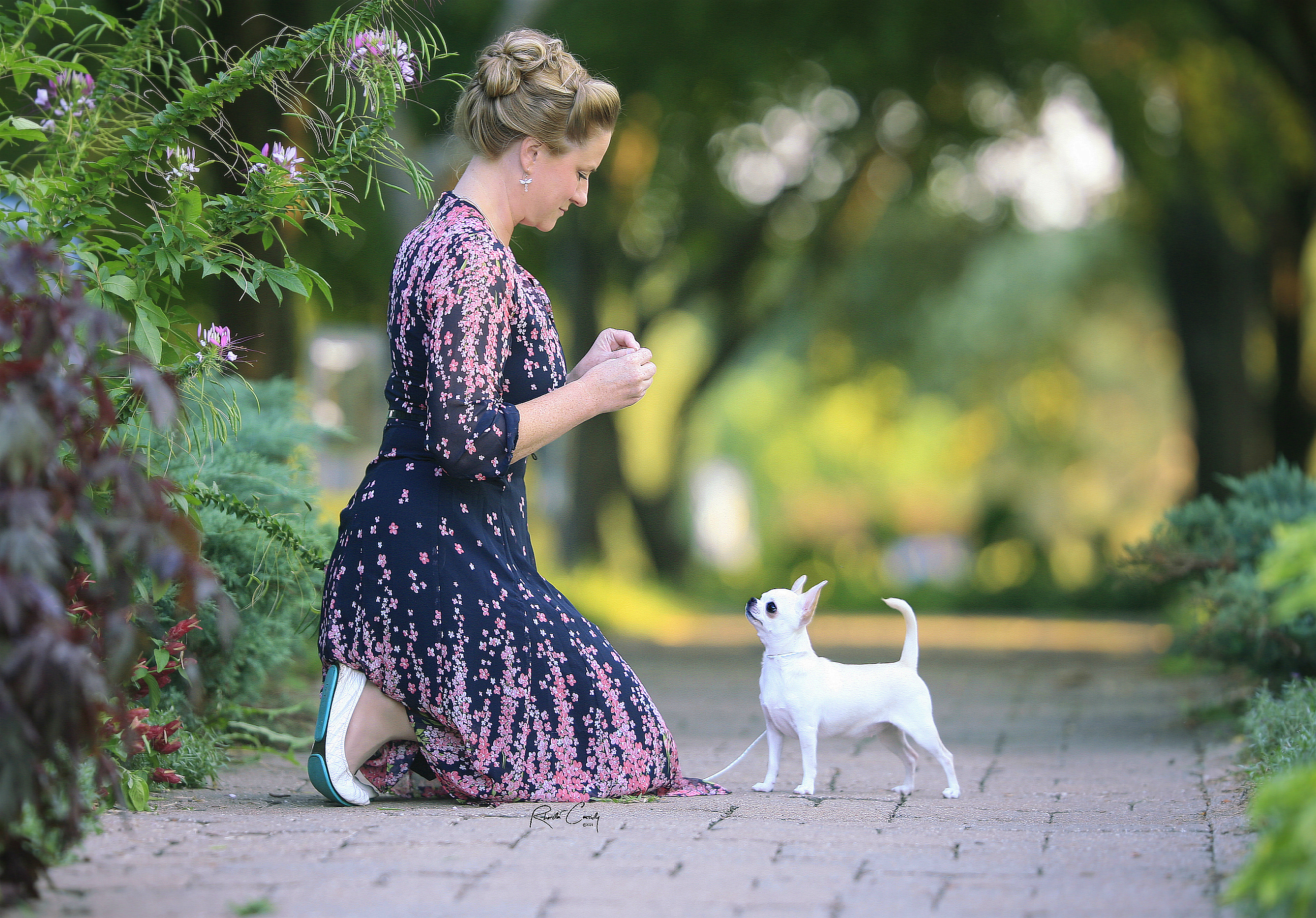
Kristi Green with BIS MBISS GCHG CH Knockout Pretty Little Liar.
Host Laura Reeves is joined by Kristi Green, talking about the tiny but mighty Chihuahua. From their slightly mysterious origins to best practices on finding and raising a well-bred dog, Green shares pro tips from her own successes and struggles.
“I think that the biggest part about living with a Chihuahua is that they can be as good of a dog as you want them to be or as bad of a dog as you let them be,” Green said. “There’s a lot of user error and really successful users, for lack of a better word, I hear people say that you know, they’re truly trying to bite somebody and I think ‘mine don’t do that.’
“I’ve had a lot of Chihuahuas come and go throughout my process. And, and how you handle them in certain situations really, really has a lot to do with the dog that you have. What you put in is what you get out. But just day-to-day life with them, they’re wonderful dogs. You’ve got this little dog that thinks you hung the moon and the stars, whether you barely got out of bed that day or you solved World Peace. They love you no matter what. And that really is part of their charm.
“It really has become the gold standard in Chihuahuas now that you do health test the dogs. That really has changed over the last 15 years since I started, and I think that that’s important. Look for a breeder that’s not just ohh, my dogs are healthy, they’ve been health tested, but that they’re putting those dogs in the database because it says they care about the big picture, not just selling puppies, but they care about what happens in 15 years when somebody wants to learn about a pedigree.
“A Chihuahua that’s going to be a good pet really has been home raised. You know, they’ve been raised in your house. They’ve been raised under foot. They’ve been exposed to just life in a house. They also have been socialized. I think it’s a good idea to ask the question of, you know, what do you do to socialize the puppies? How are the puppies potty trained? I mean, are you doing anything as far as those things go, because that early framework really does make a big difference as far as how the dog handles life for the next 15 years.”
Read more in our 2018 blog post interview with Green HERE.
652 – Breeding Dogs Around Diseases that Don’t Have a “Test”
Breeding Dogs Around Diseases that Don’t Have a “Test”
Host Laura Reeves is joined for part two of her impactful conversation with Aimée Llewellyn-Zaidi, Project Director, IPFD Harmonization of Genetic Testing for Dogs at International Partnership for Dogs.
Today’s conversation covers some of the biggest hot button diseases impacting all dogs – seizure disorders, cancer, bloat and other life-threatening issues.
Llewellyn-Zaidi offers insight, information and details about new tests coming online and the ways we can minimize risk while working with small gene pools.
“(S)ome cancers are just kind of part of dogs, just being a dog. Or sometimes they’re part of being a type of a dog, like some types of dogs are more likely to be at risk than others, whether it’s size -related or maybe they’re a herding breed, and it’s just at some point in ancient times, (when we) started dividing out into generalized proto-breeds, when we started having our wolfie looking ones and spitzy -looking ones, and we started having our molosser looking ones, and we started having our retrieving looking ones. Before they were such distinctive breeds, there would have already been selection causing inbreeding and increasing some genetic duplication to get those desirable traits.
“And you may bring some things along with that. So some of these cancers are not specific, necessarily, to your breed and they’re just specific to that type of dog.
“With cancers there are two cancer tests that are available to all dog breeds or all dog types. There is something called a C -kit somatic mutation for mast cell tumors. All of this is on www.dogwellnet.com so you can check it out. And there’s also the BRAF mutation, so invasive transitional cell carcinoma. That’s for all dogs as well. And for my dear beloved Bernese people, there’s histiocytic malignancy that’s available as a genetic test as well.
“So for some of these specific cancers and specific epilepsies, there are genetic tests available that you can use to help you maybe make some decisions or at least to eliminate what might else be going on, right? So you know if you’re not quite sure what kind of a cancer it is, the genetic test might help give you some information on that.
“All of this really comes down to how risky do you feel? We can rebuild any breed from scratch if we needed to. It would just take a lot of time and a lot of effort and a lot of consideration. So in some ways, being very radical, and I’m setting health and welfare aside for just a second, being very radical, it’s kind of up to a breed to make a choice. Do you want to keep breeding to your breed standard until you reach a point of too much poor health and inbreeding depression and then you start again?
“Or do you want to try to conserve and maintain kind of where you are now? Or do you want to try to improve or expand your genetic diversity from where you are now?
“And all three of those kind of philosophies are acceptable, assuming you’re keeping at least welfare in mind. And all three of those philosophies probably will fit all the different kinds of breeds in their unique situations.
“Followed very closely by conserving that breed type or those breed qualities that are important to you, right? That’s the point. That’s the point and the pleasure and the art side, right?
“So if you’re keeping in the back of your mind those chess moves, whether it’s ‘I’m gonna use this type for a couple of times because I really like that or I want to introduce that and then I’m gonna have a couple of litters where I go out and just kind of rebuild that diversity and then maybe go back to that type I happened to like,’ that’s how you kind of weave through the genetic variation that you have within your breed population.
“You probably can’t do that forever unless you’re very, very lucky as a breed, like you can’t do that forever, but you can probably do that for quite a long time.”
651 – Bridging the Gap Between Art and Science of Dog Breeding
Bridging the Gap Between Art and Science of Dog Breeding
Host Laura Reeves is joined by Aimee Llewellyn Zaidi, project manager for the International Partnership for Dogs. Llewellyn Zaidi’s work is bridging the gap between art and science in dog breeding. They talk about inbreeding and genetic diversity, how those things go together and what you can do when there isn’t a test for a health problem.
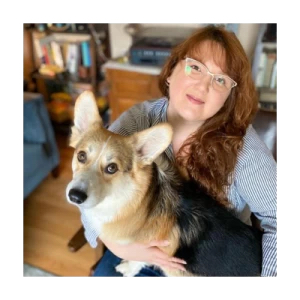
Aimée Llewellyn-Zaidi and her Corgi.
“International Partnership for Dogs offers free resources for dog breeders and for vets to kind of give you some unbiased transparent guidance,” Llewellyn Zaidi said.
“I am a third generation Pembroke Welsh Corgi owner. My grandparents had beef cattle in Oregon in the 1960s. They started their farm up in Silverton, Oregon. And my grandmother was a little bit of an Anglophile. And so she got two corgis back in the 70s in Oregon, which there weren’t too many corgis out here then.
“And she had these great aspirations of having them being working corgis and they worked really hard at cuddling. And they maybe, you know, barked at things, but yeah, they started as working dogs but were 100 % professional lap dogs, you know, as corgis really know how to do it. And I just never lost my love for the Pems.
“I started working as a health manager for the Kennel Club in the UK (in 2012). And by the end of my time in the UK, I had developed a team and I was the head of health and research there, really focused on bringing evidence-based education resources to breeders and to the veterinary community and to breed advisors with lots and lots of tools and resources available.
“I really wanted to take the science and kind of translate it into something practical. There wasn’t a lot of in between at the time between researchers and the people who actually have to make the breeding decisions and that disconnect really bugged me. I think it really bugged me that there wasn’t such an easy way for communication between really the art and the science of dog breeding, trying to bring those things a little bit closer together.
“I want to take some of the mystery out of some of science or some of the resources that are available. I try to be really honest and transparent about what we know, what we don’t know, what’s still kind of out there, what things might be not the most ideal resources.
“I feel like that honesty is the best way for people to be informed and to make ultimately the breeding decisions. You guys have the hard job. You have the job of deciding, right? So, I just want to give you information that can help you hopefully make those really informed decisions.”
307 – Bill Shelton, part 2: Breeding for Genetic Diversity
Bill Shelton on Breeding for Genetic Diversity, Breeding Up and More
In part two of our series, Bill Shelton, leading advocate for preservation dog breeders, and host Laura Reeves have a spirited conversation about how to improve the health of our breeds while maintaining genetic diversity.
“Leading theriogenologists say breeders are suppressing genetic diversity,” Shelton said. “Only testing phenotype not genotype in hip x-rays for example, removes dogs from the gene pool without understanding the genotype. When we eliminate genes for one thing we don’t know what genes we’re removing that are positive.”
Lethal genes must be removed, but until we have a DNA genetic marker we don’t really know, Shelton noted. We need to breed carriers and potentially affected as well in order to preserve a variety of genes for the future.
Weaving genes to make a healthier dog
“We are asking more of our dog breeding programs than we are for our own humanity,” Shelton said. “We’re actually holding dogs to a higher standard than ourselves and the future of humans.”
Taking the conversation full circle, Shelton noted that legislators are listening to extremists rather than experts in animal husbandry.
Messaging… Again!
“We need to get our message out there,” Shelton said. “We need to have more advocacy for purebred dogs. We need to step outside this circle of dog shows.”
In an outside-the-box idea, Shelton suggested that AKC needs to consider rebranding as an option, to call themselves a conservancy of heritage breeds.
“How we talk about what we do is what’s important,” Shelton said.
In the “other great ideas department,” Shelton asked rhetorically, “Where is the breeder’s committee in the delegates? Where is the VP of breeders at AKC?”
“We need to take the focus away from showing and put our focus on breeding dogs,” Shelton said. “We are at the point that an amateur delegate body is running what has become a professional industry. Everyone makes money. Who doesn’t make money? Dog breeders.”
If you missed part 1, listen here.


